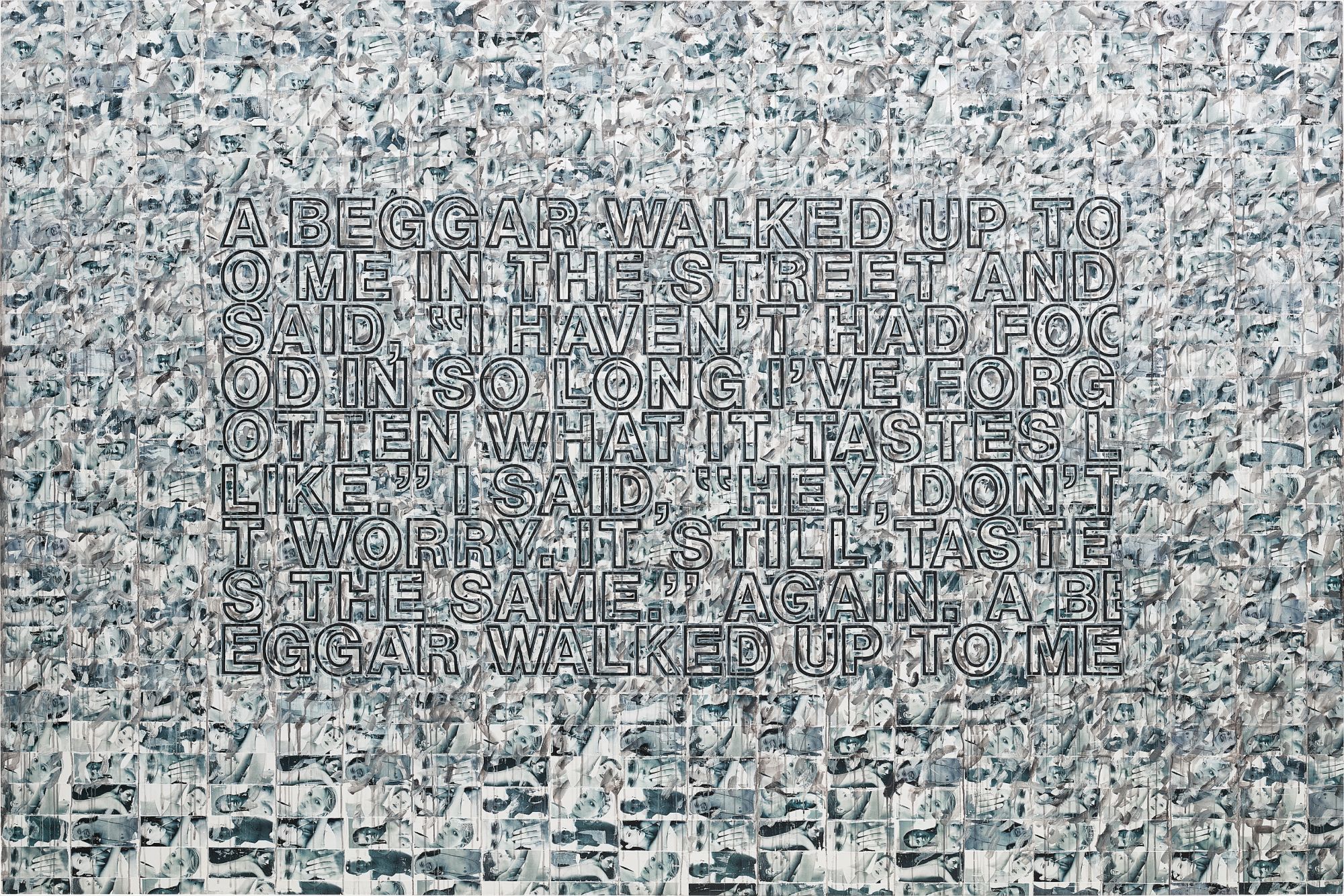

13
Richard Prince
Untitled (Portrait)
Full-Cataloguing
The present work is exemplary of Prince’s Joke paintings, which the prolific artist commenced in the mid-1980s. Using reproductions of cartoons from popular publications, such as The New Yorker, Prince layered unrelated and incongruous punch lines from other jokes beneath differing images. Instead of setting his wry anecdote against a simplistic monochromatic background, typical of his earlier works, Prince places this particular witticism in front of a tessellated patchwork, each image depicting a portrait of Kate Moss. While the execution of image and text appears to be reminiscent of Prince’s earlier Joke paintings, the artist explores this juxtaposition further in the present work. Infamous for claiming that ‘nothing tastes as good as skinny feels’, the decision to use images of model Kate Moss is particularly poignant. The ‘joke’ provocatively challenges the excesses of fashion, fame, celebrity and greed, highlighting the grotesque inequality between the mega-rich and the desperately poor.
Prince simultaneously plays upon the notion of celebrity; a concern explored throughout the canon of art history, culminating in Andy Warhol’s famed Pop silkscreens. A muse for a number of highly acclaimed artists such as Lucian Freud, Alex Katz and Marc Quinn, Kate Moss forms the foundation of Prince’s exploration of fame and the fascination with icons within popular culture. Having already photographed her on numerous occasions, including in 2003, where she wore a T-shirt emblazoned with one of his Jokes, her presence within this painting seems a deliberate, almost gleeful irreverence. By appropriating and then plastering the seductive images of Moss all over the canvas, there is perhaps another, more subtle joke, between the notoriety of the model and his overt appropriation of the brushwork of the great artist, Jackson Pollock. Here, Pop culture, celebrity and visual art are unashamedly bound together, informing and appropriating each other to create layered visual meaning, which resonates on a variety of levels for the viewer.
Exploring this technique when employed in the tear-sheet department of Time Life, Prince clipped and filed articles for editors, surrounded by the glossy images and honed advertising slogans published and mass-produced in printed media. In the process, Prince began to focus on the leftover advertising imagery, the material that remained after he cut out the required content. By collecting and comparing myriad examples of product adverts, he was able to tease out certain repeated gestures, visual devices and attitudes. As in the work of Barbara Kruger, Prince employs a montage technique, exploring the visual effect of text and image when both are altered. Experimenting with a variety of media, including photography and film, their works exposed cultural tropes and stereotypes in popular imagery. By reworking and transforming well-known images, their art challenged notions of individuality and authorship, making the movement an important facet of postmodernist thought. In this way, Untitled (Portrait) remains a savvy and insightful piece, expanding the notions of art to include social criticism for a generation of viewers saturated by mass media.
Richard Prince
American | 1947For more than three decades, Prince's universally celebrated practice has pursued the subversive strategy of appropriating commonplace imagery and themes – such as photographs of quintessential Western cowboys and "biker chicks," the front covers of nurse romance novellas, and jokes and cartoons – to deconstruct singular notions of authorship, authenticity and identity.
Starting his career as a member of the Pictures Generation in the 1970s alongside such contemporaries as Cindy Sherman, Robert Longo and Sherrie Levine, Prince is widely acknowledged as having expanded the accepted parameters of art-making with his so-called "re-photography" technique – a revolutionary appropriation strategy of photographing pre-existing images from magazine ads and presenting them as his own. Prince's practice of appropriating familiar subject matter exposes the inner mechanics of desire and power pervading the media and our cultural consciousness at large, particularly as they relate to identity and gender constructs.